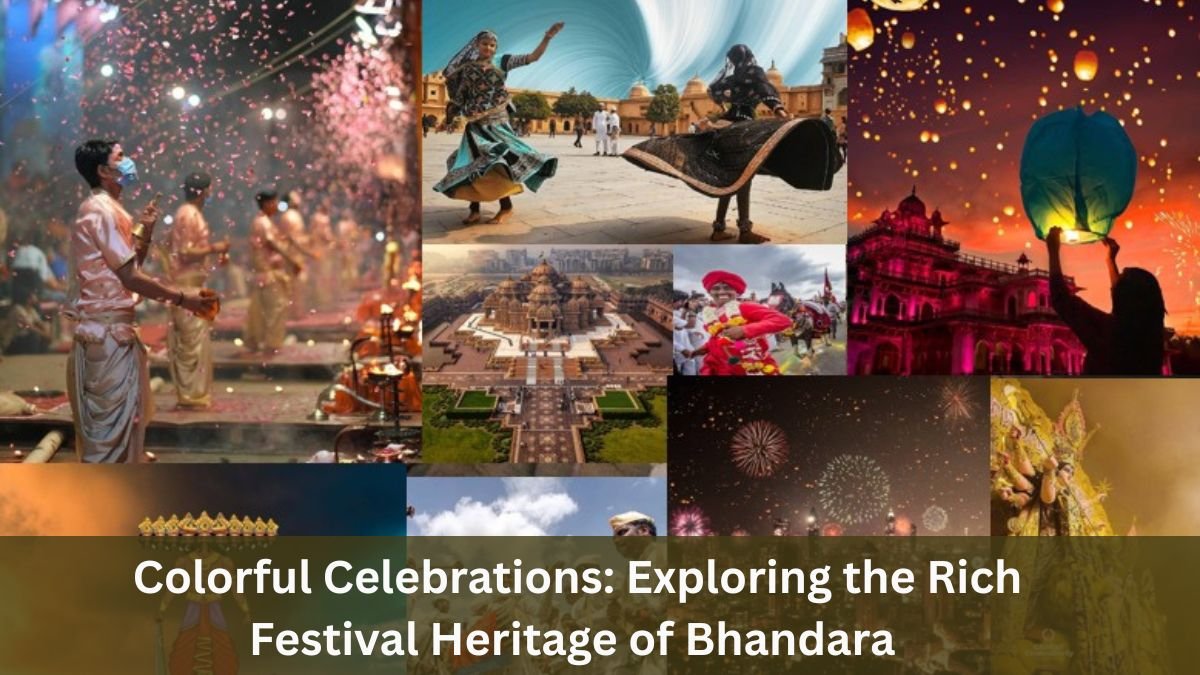Bhandara district of Maharashtra is not only known for its lakes, greenery and historical significance, but its cultural diversity and heritage of festivals also give it a distinct identity. The festivals here are not just religious rituals, but are a vibrant reflection of social harmony, tradition and folk culture. In this article, we will explore the major festivals of Bhandara district, which add color to life here.
Ambedkar Jayanti: A celebration of equality and inspiration
Bhandara district has been highly influenced by the thoughts of Dr. Babasaheb Ambedkar. Ambedkar Jayanti is celebrated with great pomp every year on 14 April. On this day, processions are taken out in towns and villages, garlands are offered to the statues of Dr. Ambedkar and speeches, dramas, essay competitions are organized on his thoughts.
This day is not only a symbol of social justice, but is also becoming a source of leadership and inspiration among the youth.
Phule Jayanti: A torchbearer of social consciousness
Mahatma Jyotiba Phule Jayanti is celebrated on April 11. The day has become a symbol of education, women empowerment, and social equality. Many schools, colleges, and social organizations in Bhandara district organize lectures, essay competitions, and social awareness rallies on this day.
Phule Jayanti is becoming extremely popular, especially in rural areas, as it is an important step towards making the backward sections of the society aware and empowered.
Pola: A festival to honor bulls
Bhandara is an agricultural district, and an important festival here is Pola. This festival is celebrated on Bhadrapada Amavasya, when farmers decorate, worship, and express gratitude to their bulls.
In villages, especially, this day is celebrated with great fervor—bull race competitions, decorative tableaux, and traditional songs add to the festivities. Pola is not just a festival, but it also shows how nature and livestock are an integral part of our culture.
Deepawali: A confluence of lights and folk traditions
Deepawali is not just a religious festival, it is an integral part of the social life of Bhandara. The festival is celebrated with traditional faraal (sweets and snacks), rangoli, earthen diyas, and family get-togethers.
Some of the highlights of Bhandara include the tradition of Deepotsav fairs, where handicrafts, folk music, and swings for children are set up. These fairs also boost the rural economy.
Ganeshotsav: Vibrancy of folk arts
Ganesh Chaturthi is celebrated on a grand scale in Bhandara district. Ganesh mandaps are decorated in various mohallas, villages and local artists get a platform—dramatic performances, bhajans, dance-dramas, and one-act plays are part of it.
The enthusiasm of the local dhol-tasha troupe and the youth is a sight to behold in the procession of Ganpati Visarjan. This festival connects the youth with cultural identity and provides a platform to their creativity.
Holi and Dhulivandan: Colour, gaiety and mingling
Holi, also known as Dhulivandan in the local language, is celebrated with great gaiety in Bhandara, especially in rural areas. People apply colours on each other, prepare traditional dishes and dance and sing folk songs.
The tradition of ‘Dhammal’ is prominent in this festival, where groups of youth roam from village to village dancing and singing folk songs wearing colourful clothes. This tradition is a beautiful medium to connect the people of the community.
Ram Navami and Dussehra: Religious devotion and cultural pride
On the day of Ram Navami, special kirtan, Ram Katha and bhajan programmes are held in Bhandara. On the other hand, the tradition of Ravana Dahan and weapon worship on Dussehra is still alive. Dramatic performances are held in many villages and towns, which connect generations with the story of Ramayana.
Chhath Puja: Festival of Sun Worship and Faith
Chhath Puja, which is known as the tradition of North India, has now become very popular in Bhandara district as well. A large number of migrant people from Bihar and Uttar Pradesh live here, who worship at Chhath Ghat and sing collective bhajans.
This festival has now become a symbol of the diversity of the district.
Makar Sankranti and Tilgul Tradition
On Makar Sankranti, people give each other sesame and jaggery by saying ‘Tilgul Ghya, God God Bola’. This tradition has become a symbol of social harmony here. Many social organizations organize kite competitions, blood donation camps, and sports on this day.
Social and cultural significance of festivals
All these festivals of Bhandara district are not limited to worship, but they connect people, increase mutual interaction and keep the local culture alive. Folk dance, folk music, traditional cuisine and craftsmanship are promoted through festivals.
Festivals boost local economy
The fairs, markets and handicraft exhibitions held on these occasions provide a good source of income to local artisans and small traders. Festivals not only strengthen the culture but also the local economy.
Conclusion
The festival tradition of Bhandara district teaches us how unity can be cherished in diversity. Whether it is respect for bulls or the birth anniversary of pioneers of education—every festival reflects some aspect of the society. These festivals connect people, inspire and keep us connected to our cultural roots.
The soil of Bhandara is full of cultural heritage
